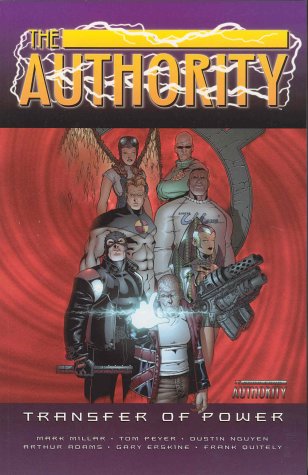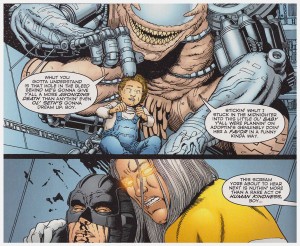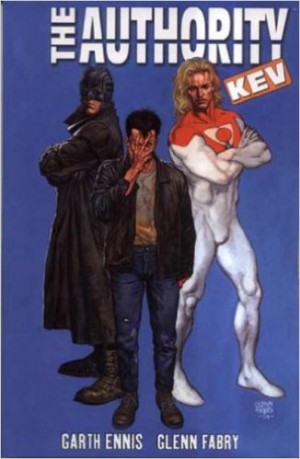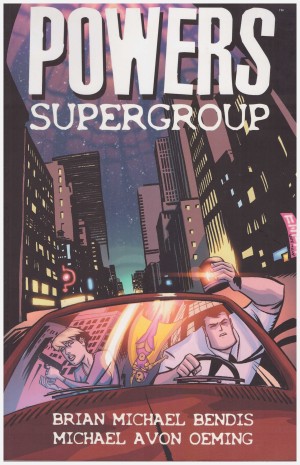Review by Karl Verhoven
Transfer of Power begins spectacularly well. “The seven richest countries in the world just sent a genetically modified hillbilly” brags the odious Seth as he cuts through the Authority like a hot knife through butter. Mark Millar has found his voice, and Frank Quitely’s art is sublime, but unfortunately that’s his lot for this book.
That opening shot installs a new Authority in the Carrier under corporate control, at which point Tom Peyer and Dustin Nguyen take over to spotlight this new team. They’re a multinational exercise in cynical manipulation, callously perpetrating atrocities in corporate interests, while representing themselves to the global public as saviours who’ve replaced out of control terrorists. It’s a workable concept, and much of it is well executed, but Peyer’s characters lack the slightest hint of subtlety and so frequently cross the line from satire into ridicule. This is accentuated by Nguyen erring towards cartooning instead of continuing with the established, largely naturalistic portrayal of the Authority.
The problems this new team experience have a cause well dropped in by Peyer, but the returning Millar’s brand of satire is altogether more satisfying: “We can charge what we want, inject what we want and shag what we want just so long as we don’t get too big for our boots like that original gang of tossers.” Art Adams is also welcome on the art, although he only manages two chapters before Gary Erskine steps in to conclude the book, producing his best art to that point, dispensing with the clutter of his earlier work.
The absence of Quitely for the final three chapters is a great shame, particularly considering this is Millar’s best Authority material. He’s once again playing with some big ideas. Religimon, the genetically engineered universal God is just a throwaway, but hilarious, and the forthcoming reality haemorrhage a name that might be applied to assorted comic crossovers. We drop back in to discover the fates of the original team early, and they’re imaginatively distressing. Millar also gives a masterful lesson in the mechanics of drama by setting up hope, then whisking it away on a couple of occasions as Seth also returns. He can be forgiven for the pontification of the conclusion and finishing up with a somewhat saccharine final page laying the series to rest, having already delivered the punch the air moments surely every reader would want.
The Authority would be revived very rapidly, with a number of respected creators attached over the years, but to date it’s never been re-booted with the sheer panache that characterised this first series at its best.
This book is long out of print, but the content can be found collected with Earth Inferno and the Millar/Quitely sections of Under New Management as The Authority vol 2





